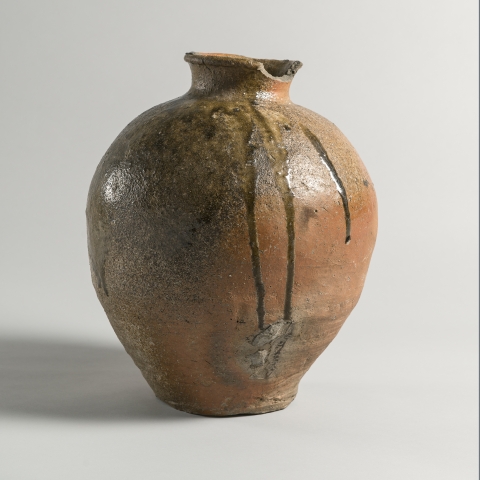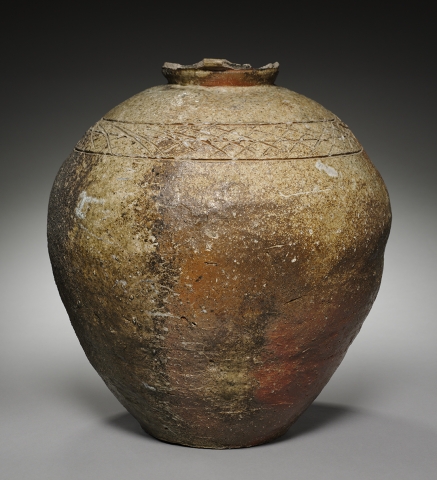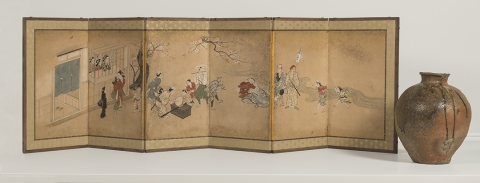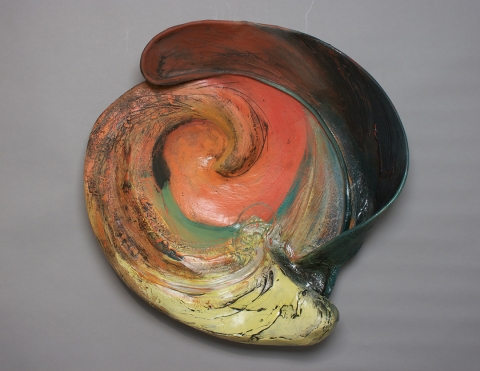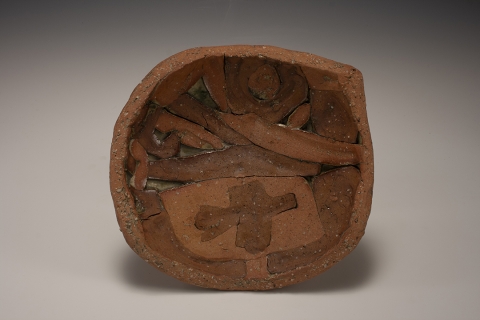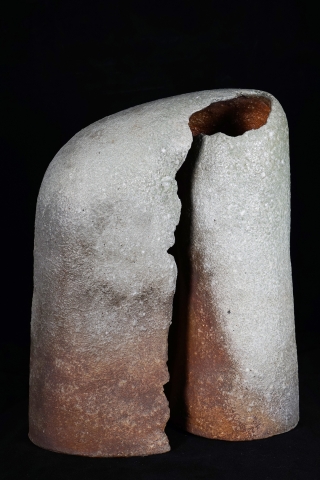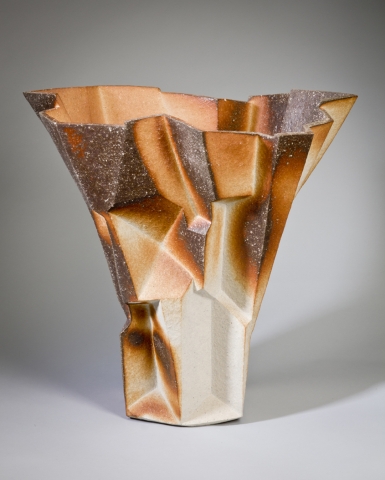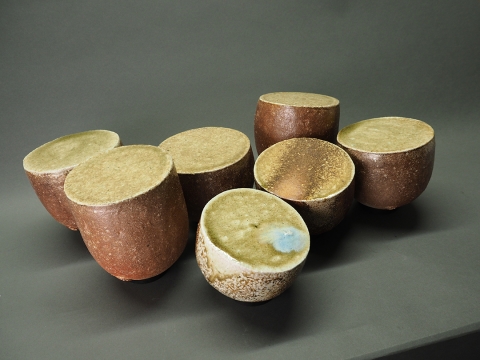Clay as Soft Power: Shigaraki Ware in Postwar America and Japan
Clay as Soft Power
Shigaraki Ware in Postwar America and Japan
On View: November 12, 2022 — May 7, 2023
Curator: Natsu Oyobe, Curator of Asian Art
Explore The Uncharted History of How Pottery Transformed Global Relations
Clay As Soft Power examines how Shigaraki ware ceramics transformed the American public’s image of Japan, helping the country shift its identity from World War II enemy to Cold War ally to global cultural change maker.
Known for its earthy tones, rough clay surfaces, and natural ash glazes, Shigaraki wares originated from one of six ancient kilns of Japan, and has a rich history from the 13th century to today. This exhibition explores three distinct periods of that history, telling a story of global intrigue, covert international relations, and the evolution of this uniquely Japanese art form.
In the Media
Exhibition Sections
Post War Collecting and Exhibitions
Shigaraki ware entered American museum collections between the 1960s and 1980s and became a staple in permanent galleries and presentations of Japanese art. This was, in large part, because the aesthetics of Shigaraki ware fit well within the postwar discourse of Japanese art and culture, which celebrated austerity over sophistication. Modest Japanese ware replaced industrial porcelain products in the tastes of consumers and collectors. Shigaraki ware became a “soft power” that quickly shifted the image of post-war Japan, turning the country into America’s peaceful, democratic ally in the Cold War era.
Featured Objects
Cultural Exchange
While historic Shigaraki ware jars were exhibited at and collected by American museums, another important program was ongoing to promote the new image of Japan: an exchange of artists. For decades after the 1960s, support from government agencies, universities, and foundations funded American ceramic artists to travel and study at traditional kiln sites in Japan. Many chose to go to Shigaraki. These artists were deeply influenced by the Shigaraki ware tradition, and their presence, in turn, profoundly impacted artistic production in Japan. After the 1980s, Japan became a new economic superpower, presenting itself as a true “nation of culture.” A brand that worked for the country, in part, because it was strengthened by the “soft power” of this decades-long global artistic exchange.
Featured Objects
A New Era of Private Collecting
In the early 2000s in America, contemporary Shigaraki ware surged in popularity, becoming highly sought after, especially for private collections. Collectors encountered Shigaraki ware and other unglazed, wood-fired wares through American dealers and recognized it as a significant, and enduring trend in contemporary Japanese ceramics. These collectors have also impacted the practice of ceramic artists, who began to make larger and more experimental objects. For the Japanese government Shigaraki ware has become an international icon of the country’s culture and influence, promoted as a uniquely Japanese art form.
Featured Objects
ILLUSTRATED GALLERY GUIDE FOR CLAY AS SOFT POWER
Visit on your own time and get more from Clay as Soft Power with this illustrated gallery guide. Print it off before you arrive and follow the prompts as you explore the gallery!
Download Guide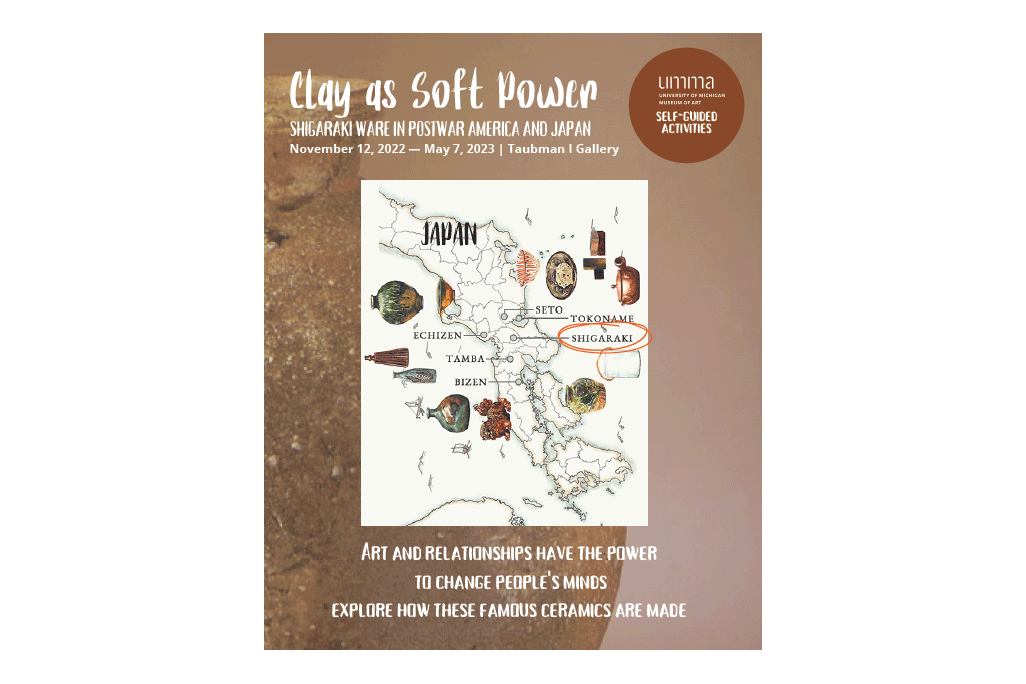
Created and illustrated by Isabel Engel
Support
Lead support for this exhibition is provided by the U-M Office of the Provost, the Japan World Exposition 1970 Commemorative Fund, the E. Rhodes and Leona B. Carpenter Foundation, the National Endowment for the Arts, the Michigan Arts and Culture Council, and the U-M Center for Japanese Studies. Additional generous support is provided by the Japan Foundation, James M. Trapp, Nancy and Joe Keithley, and the William C. Weese, M.D. Endowment for Ceramic Arts.


